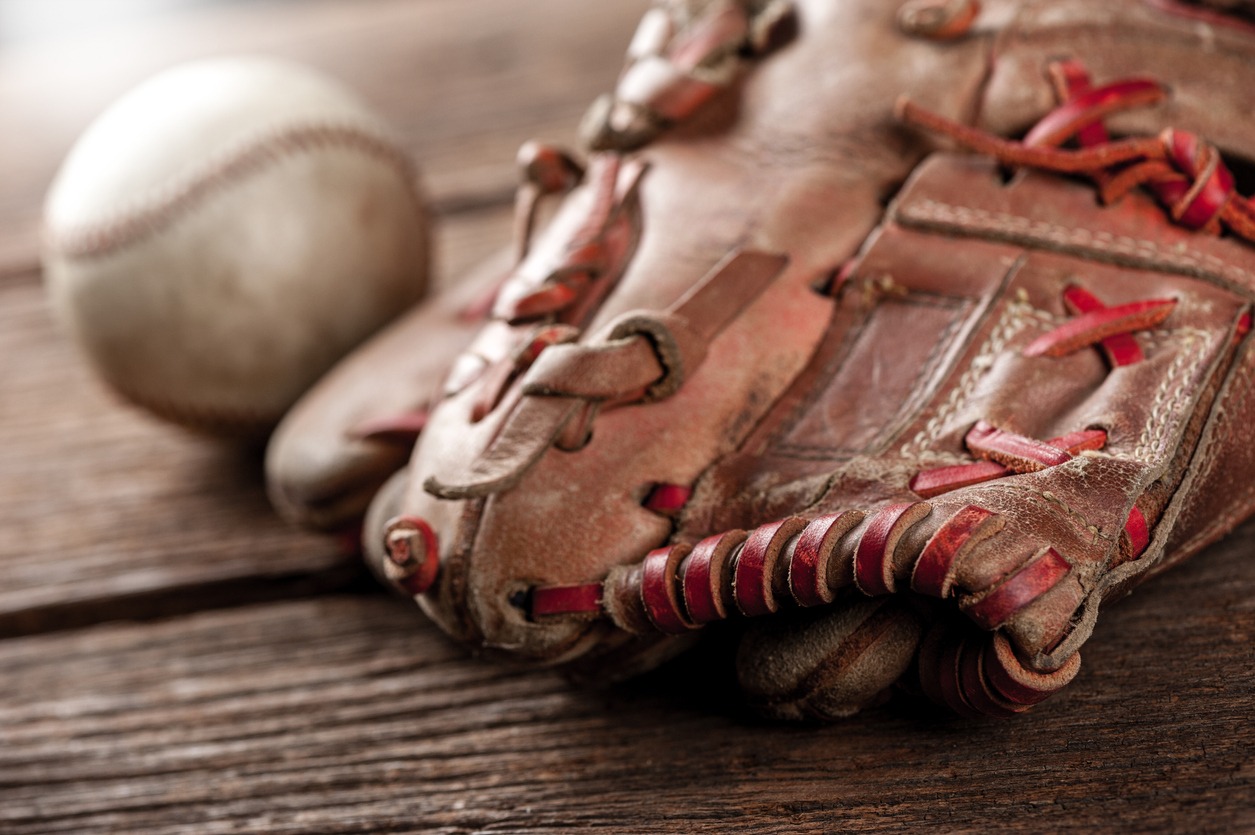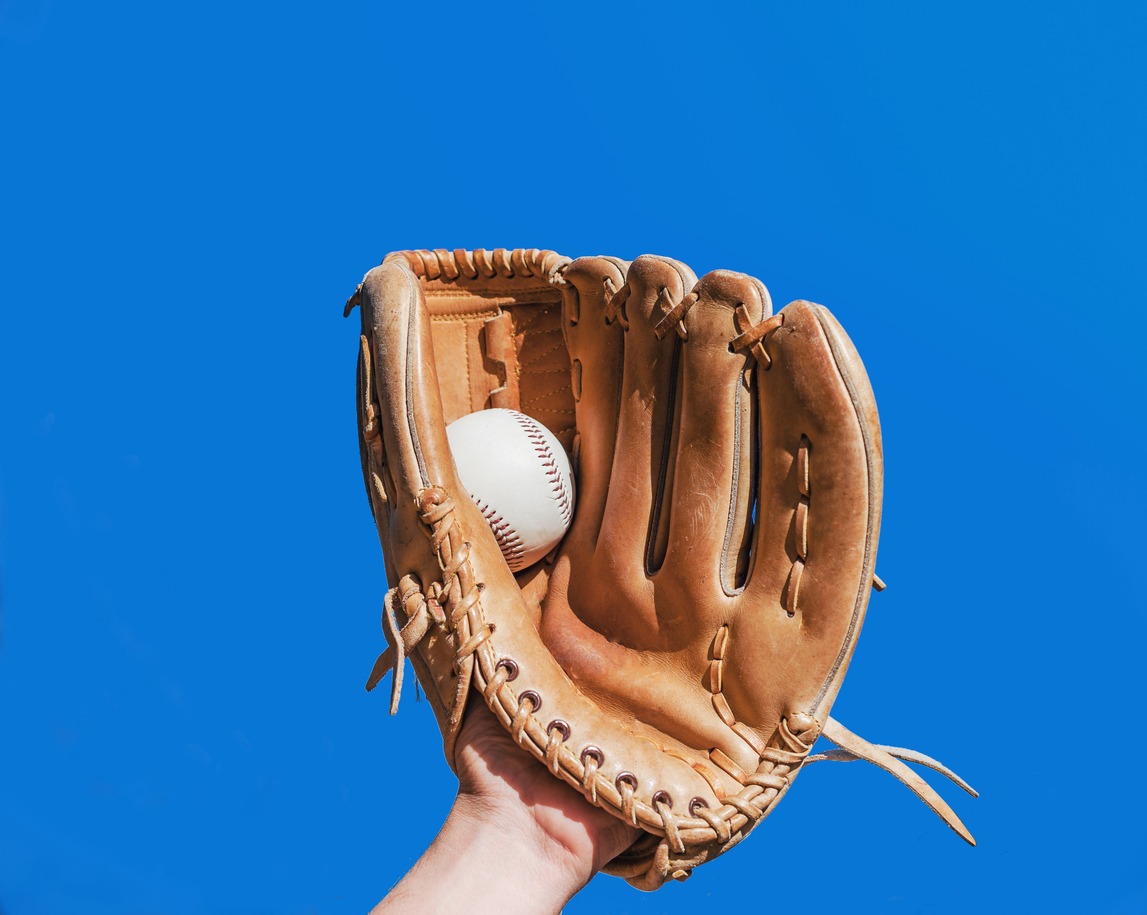Baseball gloves aren’t made the same. Apart from the difference in size, shape, flexibility, grip, style, and comfort, you’ll most likely stumble across the different types of materials used when making baseball gloves. And, like with how you carefully choose the material of your new clothes, jeans, and shoes, it’s also vital to select the right type of material for your glove and understand how they can affect your performance when playing the game. So, read on below to learn more about what materials baseball gloves are made of – ultimately helping you choose the best one for you.
Materials Used in Baseball Gloves
Baseball gloves are made of genuine leather, synthetic leather, or a combination of both. There is also plastic, neoprene, nylon, and elastane used for reinforcing the thumb and fingers, but the majority of the baseball gloves composition is made of leather.
1. Genuine Leather
Genuine leather, obtained from animal skins and hides, is the highest-quality material you can find for baseball gloves and the one used by the top baseball glove manufacturers. It offers many upsides, such as the ability to hold up well, giving off a natural feel, having great grip, and providing lots of protection to the user’s hand.
Yet, like with any material, genuine leather also has a fair share of its downsides. They tend to cost more than their synthetic counterparts and are pretty difficult to maintain. You must clean off any grip spray and pine tar after each game. Plus, you must also consistently apply mink oil or leather conditioning to keep it from drying out, cracking, and suffering from discoloration.
Like in the earliest days, cowhide leather is still the predominantly used raw material in making baseball gloves today. Tanneries process beef cattle hides where they undergo a curing process to eliminate bacteria.
They also undergo tanning, a chemical treatment that gives the hides necessary characteristics like durability and flexibility. If not tanned, the leather will become dry and flaky.
After filtering them out, tanneries send the finest hides (ones without blemishes or nicks) to the factories. Each cowhide generally provides enough material to create three to four gloves.
Though cowhides are the most common, some baseball companies use buffalo hides. Others also use kangaroo hides, which are relatively softer than leather and are easier to break in.
Apart from the animal skin or hide utilized, leather can also be classified into different categories, which include:
Full-Grain
Full-grain leather is the most durable and strongest type of leather. It is obtained from the top layer of the animal skin, just underneath the animal hair. As such, the entire natural grain of the leather is still very visible and tight. With that, baseball gloves made from full-grain leather also tend to be stiffer and more difficult to break in. Nevertheless, they are made to last for years and are the preferred choice among competitive and travel teams.
Kipskin (Kip Leather)
Kipskin is derived from younger cattle, giving them a softer, lighter feel and making them easier to break in than cowhide leather due to the lack of aging. It is also smoother, as it is obtained from the cattle’s lower back, where there is less hair. Though more expensive, kip leather provides a firm, quality feel and more comfort. Baseball gloves made of kipskin are very popular among positions that require quicker hands and greater reaction times.
Cowhide
Also called pigskin, cowhide is the lowest quality of genuine leather from cattle used in making baseball gloves. Still, it offers a better feel and is more durable than synthetic ones. Around 90% of these gloves have already been broken in by manufacturers, allowing the players to adjust and finish the break-in process quickly. These types of gloves are ideal for beginners with high baseball ambitions but are still learning the ropes.
Steerhide
Considered a premium material for gloves, steerhide is stiffer and stronger than cowhide. It’s also more expensive and longer to break in. But its high-quality build and longer lifespan are worth the extra money. Steerhide is ideal for all serious baseball players in high school, college, or in the higher ranks. Steerhide baseball gloves can last an entire career if properly cared for.
2. Synthetic Leather
Synthetic leather has become popular through the years and is widely used in furniture, clothing, automotive interiors, and various sports gear.
While it has gained much improvement from its glossy, plasticky days, it can’t still match the stretchability, feel, and resilience that genuine leather offers when it comes to baseball gloves. Nevertheless, it still boasts a few perks, making it an ideal option in certain circumstances.
For instance, synthetic leather baseball gloves are cheaper than genuine leather ones. They are also a whole lot easier to maintain. You can machine wash them in cold water using gentle detergents and they’ll be good as new – something you can’t do with genuine leather baseball gloves.
Synthetic leather is also less moldable and malleable, providing a looser grip. Usually, there’s also no break-in period needed, making it a great choice for younger players with growing hands. The catch is that synthetic baseball gloves tend to be less durable and are more prone to getting holes after just a few games. Hence, these types of baseball gloves, which are designed to be extra lightweight, are often used as recreational gloves or youth gloves.
3. Hybrid
Hybrid baseball gloves use a combination of genuine and synthetic leather. Typically, the former is used for the palm, while the latter is used for the fingers. A mixture of the two leather materials produces gloves that provide a great feel and durability. Though these gloves are usually the most comfortable gloves, the difference in the feel of the materials may not appeal to some users.
Other Raw Materials Used in Making Baseball Gloves
As discussed earlier, not the entire baseball glove is made out of leather. Other materials are used for the fingers, palm, and glove webbings. These include:
Neoprene
Initially utilized for creating scuba diving suits, it is a synthetic rubber-like material derived from polychloroprene and other chemicals. It is stiff, water-resistant, and heat-proof, as well as both smooth and stiff, commonly used as a reinforcement in the wrist area. It conforms well to the hands and provides additional support without causing blisters or injuries. A downside is it’s not breathable but offers great insulation from outside elements like extreme cold and heat.
Nylon
It is a widely used material in the world and can be found in apparel, flooring, electrical equipment, molded parts for automotive, and food packaging films. When it comes to baseball gloves, it is commonly utilized as a lining material or as a mesh fabric for the cutouts in the baseball gloves for added ventilation. Replacing parts of the leather with nylon fabric reduces manufacturing costs, helping make gloves more affordable for players. However, gloves with higher nylon composition tend to be less durable than ones entirely made of leather.
Elastane
It is a lightweight, synthetic filament fiber invented in the mid-20th century and used to make stretchable clothing like sportswear. When replacing leather with other materials, it loses the flexibility naturally offered by genuine leather. So, to ensure that gloves won’t get stiff and hard to use, elastane is incorporated to provide the required elasticity. A downside is that elastane fabric will lose its stretchiness, causing the baseball gloves containing it to sag or lose shape over time quicker than those baseball gloves without it.
Takeaway
Though many materials compose a baseball glove, one thing is certain: it’s an important piece of equipment for this sport we love. While understanding the material is a good way to go, remember that you must also factor in the fit, comfort, softness, design, and flexibility to get the perfect glove that can manage the job, allow you to perform at your best, and match how you play the game.
If you are having difficulties finding the best and most suitable baseball glove for you, check out several Japanese Baseball Glove Manufacturers to know which brands offer the features and quality you are looking for in baseball gloves.



